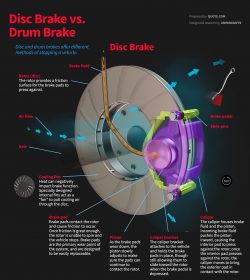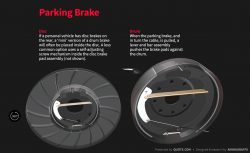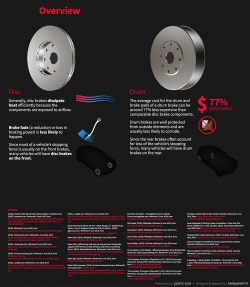Disc Brake vs. Drum Brake
Disc Brake
Brake fluid
Rotor (disc)
The rotor provides a friction surface for the brake pads to press against.
Air flow
Axle
Cooling fins
Heat can negatively impact brake function. Specially designed internal fins act as a “fan” to pull cooling air through the disc.
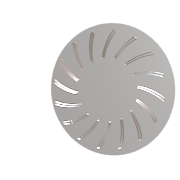
Brake pad
Brake pads contact the rotor and cause friction to occur. Once friction is great enough, the rotor is unable to spin and the vehicle stops. Brake pads are the primary wear point of the system, and are designed to be easily replaceable.
Piston
As the brake pads wear down, the piston slowly adjusts to make sure the pads can continue to contact the rotor.
Caliper bracket
The caliper bracket attaches to the vehicle and holds the brake pads in place, though still allowing them to slide toward the rotor when the brake pedal is depressed.
Caliper
The caliper houses brake fluid and the piston. Incoming brake fluid pushes the piston inward, causing the interior pad to press against the rotor; once the interior pad presses against the rotor, the caliper moves to bring the exterior pad in contact with the rotor.
Brake pedal
Slide pins
Drum Brake
Anchor pin
As well as providing an “anchor” for the return springs to hook around, in some instances the anchor pin can also assist or replace the wheel cylinder in keeping the brake shoes from rotating with the drum when the brakes are applied.
Return springs
Return springs pull the brake shoes off the brake drum when the brake pedal is not being pressed.
Brake shoe
Brake shoes contact the drum and cause friction to occur.
Hold down spring, pin, and retainer
Pins and retainers keep the hold down springs in place while the springs allow the brake shoe to move when necessary.
Adjuster
By turning an adjustment screw, the adjuster can be lengthened to ensure that the brake shoes remain a similar distance from the drum as the shoes wear down.
Backing plate
The backing plate is attached to the axle housing and does not rotate. It holds the wheel cylinder, anchor pin, and pin.
Brake drum
The brake drum houses and protects the inner brake parts. The inner rim of the drum is the braking surface.
Brake pedal
Wheel cylinder
As brake fluid enters the wheel cylinder, it pushes the seals/pistons outward, causing the brake shoes to contact the inside of the drum.
Axle
Parking Brake
Disc
If a personal vehicle has disc brakes on the rear, a ‘mini’ version of a drum brake will often be placed inside the disc. A less common option uses a self-adjusting screw mechanism inside the disc brake pad assembly (not shown).
Drum
When the parking brake, and in turn the cable, is pulled, a lever and bar assembly pushes the brake pads against the drum.
Overview
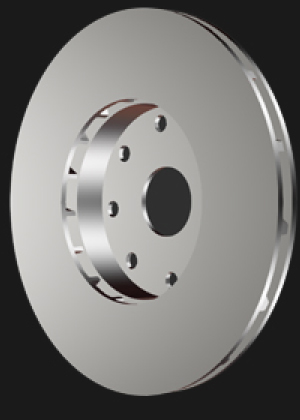
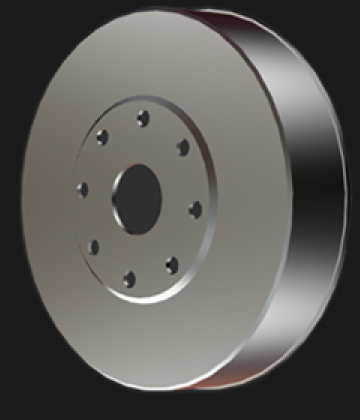
Disc
Generally, disc brakes dissipate heat efficiently because the components are exposed to airflow.


-
Brake fade (a reduction or loss in braking power) is less likely to happen.
-
Since most of a vehicle’s stopping force is usually on the front brakes, many vehicles will have disc brakes on the front.


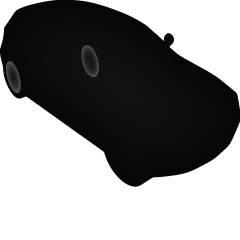
-
Drum
-
The average cost for the drum and brake pads of a drum brake can be around 77% less expensive than comparable disc brake components.
-
Drum brakes are well protected from outside elements and are usually less likely to corrode.
-
Since the rear brakes often account for less of the vehicle’s stopping force, many vehicles will have drum brakes on the rear.
References
- | Repair Guides | Rear Disc Brakes | Brake Caliper | AutoZone.com. (2016). Autozone.com. Retrieved 4 June 2016, from http://www.autozone.com/repairguides/Honda-Civic-CRX-del-Sol-1984-1995-Repair-Guide/REAR-DISC-BRAKES/Brake-Caliper/_/P-0900c15280061d8f
- (2016). Retrieved 4 June 2016, from https://researchbank.rmit.edu.au/eserv/rmit:6207/Stephens.pdf
- (2016). Pelicanparts.com. Retrieved 4 June 2016, from http://www.pelicanparts.com/techarticles/MINI/33-BRAKES-Brake_Pad_Replacement/images_med/Pic17.JPG
- (2016). Lesschwab.com. Retrieved 4 June 2016, from https://www.lesschwab.com/images/content/drum-brake-modal.png
- (2016). Ct.early-mustang.com. Retrieved 4 June 2016, from http://www.ct.early-mustang.com/charles/K_vert/8_22_10/8_22_10%20017.jpg
- (2016). Lunghd.com. Retrieved 4 June 2016, from http://www.lunghd.com/Tech_Articles/Suspension_Steering_Axles_and_Brakes/Drum_Brake_Service/Drum_Brake_Hardware_10_small.jpg
- (2016). Lunghd.com. Retrieved 4 June 2016, from http://www.lunghd.com/Tech_Articles/Suspension_Steering_Axles_and_Brakes/Drum_Brake_Service/Drum_Brake_Hardware_10_small.jpg
- AGCO Automotive Repair Service - Baton Rouge, LA - Detailed Auto Topics - How to Diagnose Hydraulic Brake Problems. (2016). Agcoauto.com. Retrieved 4 June 2016, from http://www.agcoauto.com/content/news/p2_articleid/202
- Brake fade. (2016). Wikipedia. Retrieved 4 June 2016, from https://en.wikipedia.org/wiki/Brake_fade
- Brake FAQ, mythbusting, and why you may not want a big brake upgrade | VW TDI forum, Audi, Porsche, and Chevy Cruze diesel forum. (2016). Myturbodiesel.com. Retrieved 4 June 2016, from http://www.myturbodiesel.com/wiki/brake-faq-mythbusting-why-you-may-not-want-big-brake-upgrade/
- Brake pad. (2016). Wikipedia. Retrieved 4 June 2016, from https://en.wikipedia.org/wiki/Brake_pad
- Brake Pads European. (2016). Au.bosch-automotive.com. Retrieved 4 June 2016, from http://au.bosch-automotive.com/en/parts_and_accessories/service_parts_1/brakes_1/brake_pads_asia_pacific/european_brake_pads/european_brake_pads_1
- Direction of rotation - RacingBrake Forums. (2016). Forums.racingbrake.com. Retrieved 4 June 2016, from http://forums.racingbrake.com/showthread.php?t=74
- Disc brake. (2016). Wikipedia. Retrieved 4 June 2016, from https://en.wikipedia.org/wiki/Disc_brake
- Dissipation. (2016). Wikipedia. Retrieved 4 June 2016, from https://en.wikipedia.org/wiki/Dissipation
- Drum brake. (2016). Wikipedia. Retrieved 4 June 2016, from https://en.wikipedia.org/wiki/Drum_brake
- Drum Brakes. (2016). YouTube. Retrieved 4 June 2016, from https://www.youtube.com/watch?v=bnc3VnQ8kUY
- Drum Brakes vs. Disc Brakes - Differences between Drum Brake & Disc Brake Kits. (2016).Autoanything.com. Retrieved 4 June 2016, from http://www.autoanything.com/brakes/drums-vs-disc-brakes
- "Drum Brakes: Principles of Operation" pt1-2 1983 US Army Auto Mechanics Training Film. (2016).YouTube. Retrieved 4 June 2016, from https://www.youtube.com/watch?v=n20sTZggvYc&feature=youtu.be&t=428
- "Drum Brakes: Principles of Operation" pt2-2 1983 US Army Auto Mechanics Training Film. (2016).YouTube. Retrieved 4 June 2016, from https://www.youtube.com/watch?v=eNpt_zq0GoM#t=151.782658
- Emergency brake cable install. (2016). YouTube. Retrieved 4 June 2016, from https://www.youtube.com/watch?v=tx9b3VfEXoI&feature=youtu.be&t=144
- Essex Designed AP Racing 2-piece Competition J Hook Disc Pair (Front 345x30mm)- C7 Z51 Corvette. (2016). Essex Parts. Retrieved 4 June 2016, from http://www.essexparts.com/essex-designed-ap-racing-2-piece-competition-j-hook-discs-front-c7z51-pair
- Floating Brake Caliper Operation. (2016). YouTube. Retrieved 4 June 2016, from https://www.youtube.com/watch?v=LTllR-nOo28
- How to Change Drum Brakes (Summary, Quick Version). (2016). YouTube. Retrieved 4 June 2016, from https://www.youtube.com/watch?v=pVrLURF7Spk
- How to Replace Front Brakes, Pads and Rotors. (2016). YouTube. Retrieved 4 June 2016, from https://www.youtube.com/watch?v=UlbFFq60Tec
- Publishing, I. (2016). WHEEL CYLINDERS - TM-5-4210-230-14P-1_382.Firetrucksandequipment.tpub.com. Retrieved 4 June 2016, from http://firetrucksandequipment.tpub.com/TM-5-4210-230-14P-1/css/TM-5-4210-230-14P-1_382.htm
Share / embed code
• Copy/paste the code below to share this project on your site (in an iframe).
• We only require a link back to this page and name attribution (ex: "by Quote.com")
Sharing images
(click for large versions)
